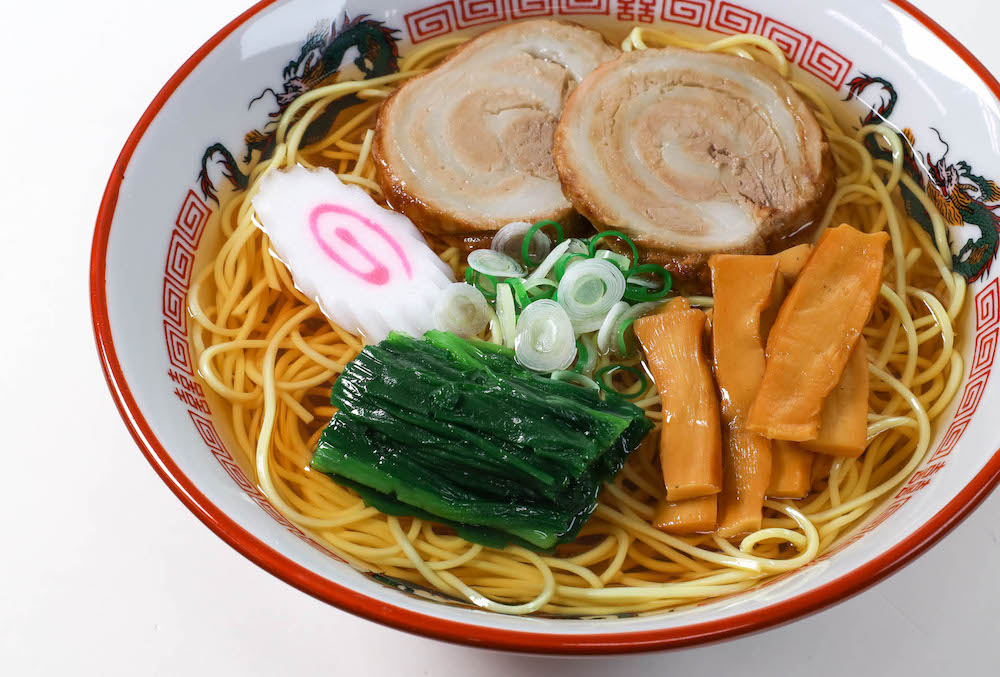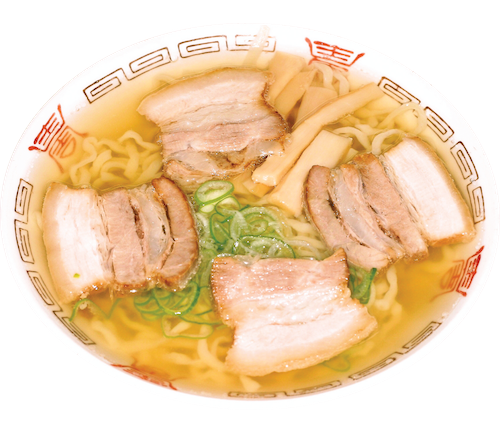Dates
03.18.2022 (Fri.) – 07.05.2022 (Tue.)
Hours
Mon. – Thu. | 11:00 AM – 6:00 PM
Fri. – Sun. | 11:00 AM – 8:00 PM
Location
JAPAN HOUSE Gallery, Level 2
Fee
Complimentary
Ramen – wheat noodles served in soup with toppings – were introduced to Japan in the late 19th century, grew popular over the following decades and became deeply connected with the culture of postwar Japan. A fast food served in a single bowl, the hot noodle soup can satisfy hunger for a reasonable price. Originally Chinese, this everyday dish has evolved differently in each region of Japan, featuring diverse ingredients and seasonings. With the growth of Japan’s economy and the spread of Japanese food globally, the dish has further evolved – even more so than sushi – so that now ramen can be vegan, halal and gluten-free. It is no exaggeration to say that ramen has become the most popular Japanese food in the world.
In Japanese food culture, vessels of diverse shapes, styles and materials – including ceramics, lacquer, metal and glass – appear on dining tables, even for ordinary meals. However, the bowls used in Japanese ramen shops are often porcelain donburi bowls with almost uniform dimensions, materials, shapes, and designs. Almost 90% of these are produced in the Tono area in the eastern part of Mino in Gifu prefecture, and many of these donburi have also made their way to ramen shops overseas. So, in one simple type of vessel, ramen of many flavors is enjoyed around the world. Yet, although the flavor of ramen – the soup, noodles and ingredients – are a focus of attention around the world – including in the Michelin Guide – the quality of the bowls themselves is rarely discussed. Since these bowls can enrich our enjoyment of ramen, why is this?
Although this exhibition touches on the history and culture of ramen, its primary goal is to spotlight the donburi itself. To examine donburi more closely, these bowls are "dissected" and observed in detail, like a specimen. Then, in the hands of thirty artists, the bowls serve as blank canvases on which the fun, the deliciousness and the many possibilities of ramen are uniquely expressed. In addition, the exhibition introduces the region of Mino – Japan’s largest producer of porcelain ramen bowls – and its long and important history of ceramic production, from tea bowls to house wares to donburi.
 Ramen Bowl designed by Taku Satoh, © Hiroshi Tsujitani (Nacasa & Partners Inc.)
Ramen Bowl designed by Taku Satoh, © Hiroshi Tsujitani (Nacasa & Partners Inc.)
The exhibition is curated by designer Taku Satoh and art writer, editor and curator Mari Hashimoto and designed by Taku Satoh Design Office (TSDO) in conjunction with the Ceramic Valley Association, Mino, Japan. It presents the idea that the experience of eating delicious noodles can be a feast not just for the nose and the mouth but for the eyes too.
Welcome Message

Meher McArthur
Art & Cultural Director
JAPAN HOUSE Los Angeles
*To watch the video in full screen, please click on the image above, then click on the YouTube icon on the lower right-hand corner.
Section 1 | Introduction to Ramen, its History and Culture
The exhibition begins with an introduction to ramen, its history and culture. Here the anatomy of a bowl of ramen noodles is dissected, breaking the dish down to not only examine the ingredients such as the noodles, broth, and toppings but also to reveal insights into the smell, flavor and time taken to eat and appreciate the noodles. Intricate plastic models of food (including a giant ramen bowl) made by Iwasaki Mokei, the renowned manufacturer of Japanese plastic food samples, and other objects, drawings and text illustrate the rich diversity and range of ingredients that make up a bowl of ramen.
Section 2 | Designer Ramen Bowls

This section explores the uniquely Japanese approach to design, to both decoration and its placement in ceramic vessels. This presentation highlights the traditional Japanese belief that utilitarian vessels can also be works of art. On display are thirty porcelain ramen bowls (donburi) and spoons (renge) decorated by artists, designers and architects mostly from Japan. Each is displayed on a pedestal as a work of art and includes a statement from each of the artists about their design.
Section 3 | The Ceramic Valley of Mino
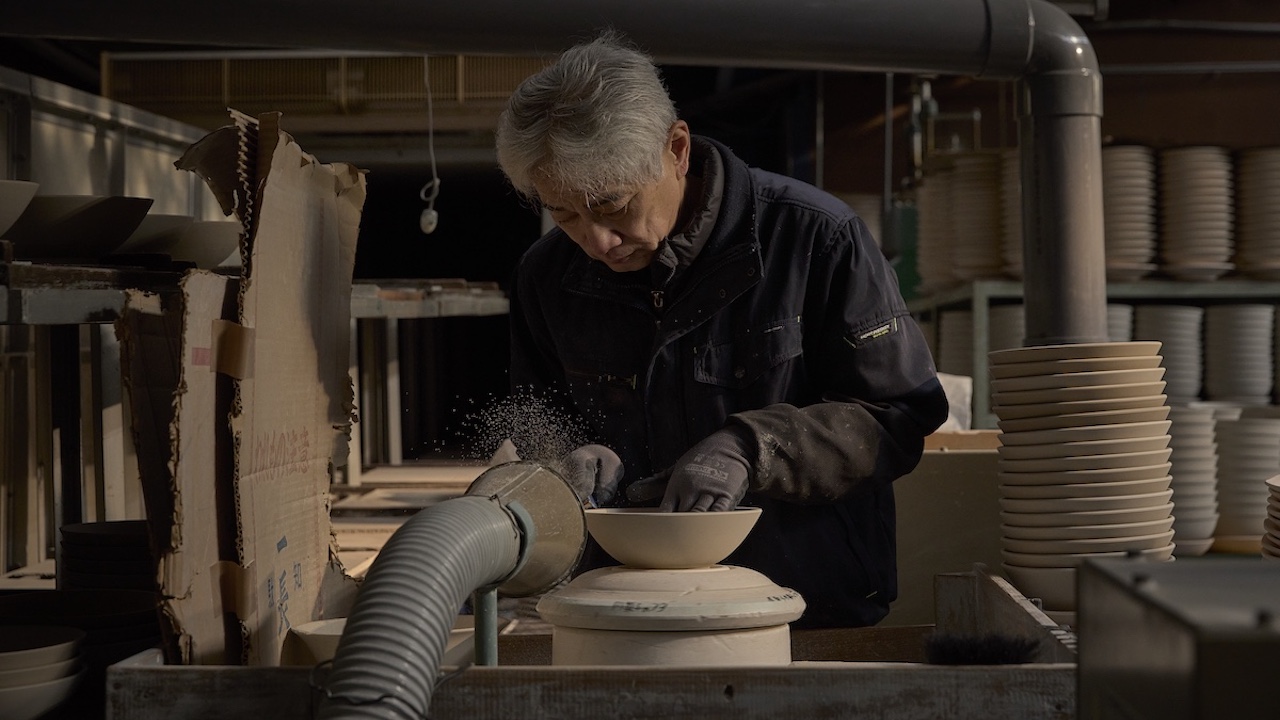
This section introduces the Ceramic Valley of Mino and its tradition as a major Japanese ceramics center that has produced beautiful, utilitarian wares for over 500 years. The section includes maps, videos and photographs introducing the geography of Mino, its history, the work and skills of its ceramic makers. Presentations here include shards of historic Mino ceramics, a collection of 90 small Mino porcelain plates (kozara) each with a unique design, ten Mino ramen bowls decorated in the major styles of Mino ceramics and a collection of contemporary examples of industrial and artistic ceramic innovation from Mino.
Gallery Photos
*To view the flipbook in full screen, please click on the "Fullscreen" icon on the lower right-hand corner from the window above.
Exhibition-Related Programs
RAMEN DISCOVERIES | A Popup Series
Dates
05.06.2022 (Fri.) – 07.31.2022 (Sun.)
Time
11:30 AM - 08:00 PM
 © Hiroshi Tsujitani (Nacasa & Partners Inc.)
© Hiroshi Tsujitani (Nacasa & Partners Inc.)
Date
03.22.2022 (Tue.)
Time
05:00 PM - 06:00 PM (PDT)
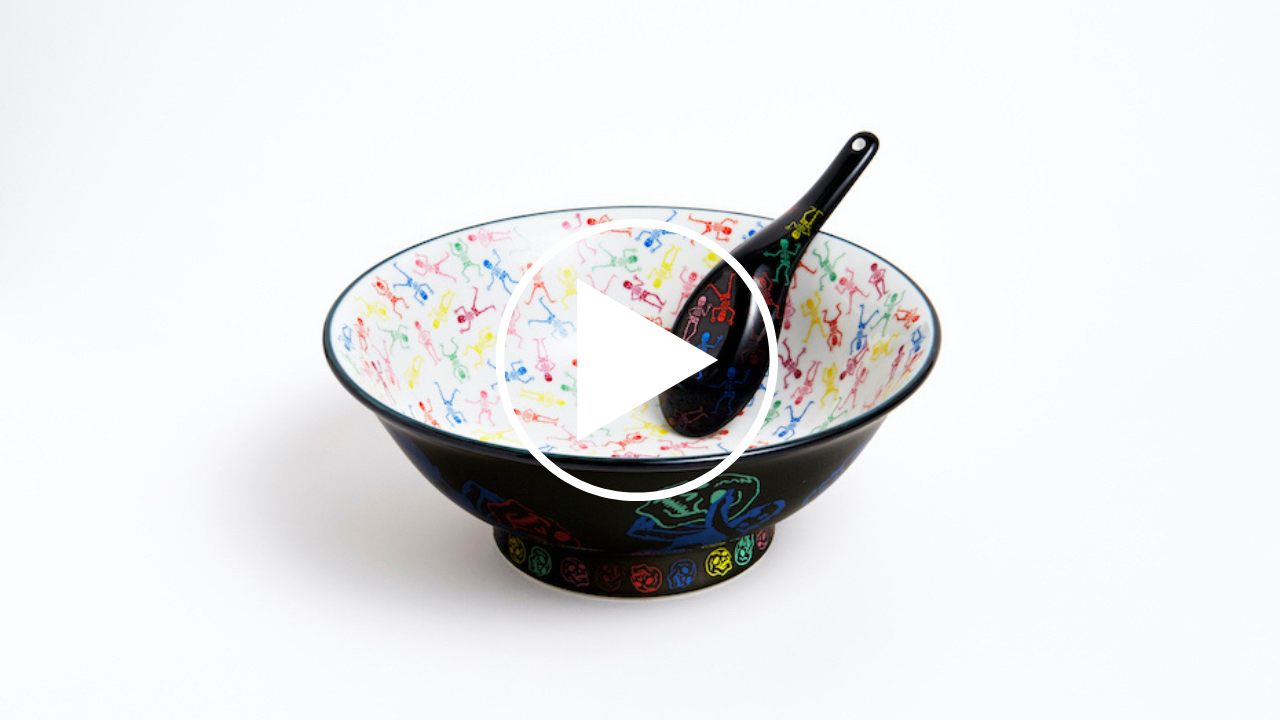 © Hiroshi Tsujitani (Nacasa & Partners Inc.)
© Hiroshi Tsujitani (Nacasa & Partners Inc.)
Date
04.05.2022 (Tue.)
Time
05:00 PM - 06:00 PM (PDT)
Reading Material
Exhibition Brochure
The exhibition brochure is available for download.
Exhibition Credits
Presented by | JAPAN HOUSE Los Angeles
Organized by | TSDO Inc. and Ceramic Valley Council
Curation | Taku Satoh, TSDO Inc. and Mari Hashimoto
Art Direction | Taku Satoh, TSDO Inc.
Graphic Design | Ayame Suzuki and Momo Hasegawa, TSDO Inc.
Exhibition Photography | Yusuke Nishibe
Curatorial Support provided by | Akira Tachibana, Takahiro Tsuchida,
Gifu Prefectural Ceramics Research Institute, Museum of Modern Ceramic Art, Gifu
Special Exhibition Assistance provided by | Ceramic Park Mino, Iwasaki Mokei Seizo Co., Ltd., Gifu Prefecture, Tajimi City, Mizunami City, Toki City, Kani City
Media Sponsor


